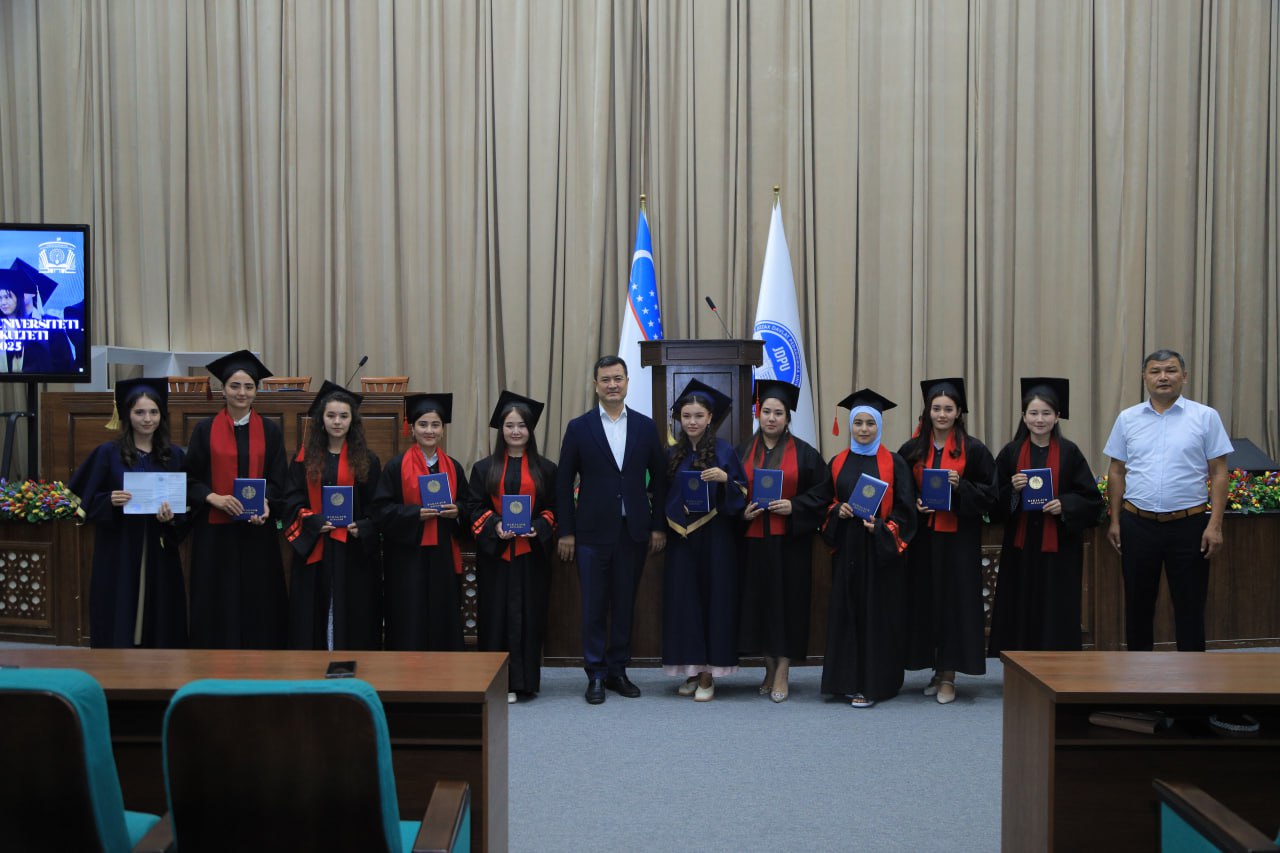Mirzayev Avazbek Khushvakht ugli
Teacher at the department of English language
methodological course of Jizzakh state pedagogical university.
An adjective in English is an independent part of speech that indicates a sign of a person, concept or object and answers the question “what – what?”. Adjectives are most often used with nouns. In a sentence, adjectives are the definition or nominal part of a compound predicate. Also, an adjective in English is a certain lexico-semantic class of predicative vocabulary that denote a feature or property of an object. Adjectives in English denote either a relative feature that denotes a property of an object, or a qualitative feature of an object without its relation to another object.
In modern English , the adjective is characterized bymorphological, semantic and syntactic features and, therefore, is considered from the standpoint of morphology, lexicology and phraseology. Semantic and syntactic features are the leading features of adjectives in the English language. In English, adjectives have a qualitative relative sign. On this occasion, I.P. Ivanova, V.V. Burlakova, G.G. Pocheptsov indicate: “Adjectives express a sign qualitative, and in this case, as a rule, this feature, when it is objectified, is transmitted to express expressive, figurative from the adjectival form: red – redness, brief – brevity, long – length. a subjunctive agent can recognize a negative sign through negation of the subject – and then usually this subjunctive agent itself is derived from the name: ice – ice, industry -industrial, week –weekly, wood – wooden” [1, p. 34].
The juxtaposition of relative, qualitative and possessive features of adjectives allows them to be distinguished into qualitative, possessive and relative. At the same time, qualitative adjectives are characterized by the fact that they express the quality of an object or objects, its specific properties. It should be noted that in English it is also possible to distinguish a group of adjectives endowed with the sign of quantity. Therefore, concerning I.P. Ivanov, V.V. Burlakov and G.G. Pocheptsov, the decrees say: “A controversialgroup is, which, according to some of its features, can be attributed to an adjective expressing quantity is much, many, little, few. Morphologically, they are close to adjectives, since they have degrees of comparison. According to their other properties, they are close to numerals, as well as to pronouns. In essence, they stand between these three parts of speech. It seems that this group should be considered as inter-field a group that combines the properties of numerals, adjectives andpronouns” [1, pp. 34-35].
In addition to the morphological features of adjectives, it is also possible to distinguish their word-forming features, which are endowed with a suffix structure, i.e. they are formed in English with the helpof suffixes formed, for example, from verbal and nominal bases: -al, –ial – national, residential; –ful – doubtful; -less – unnecessary; -y – dusty; -ive – progressive; -able – understandable”, etc.
In turn, degrees of comparison in English are forms of inflection of adjectives. They transmit a certain the intensity of the trait in comparison with objects that have the same trait. This feature is endowed with just qualitative adjectives that vary in degrees of comparison in English, with the exception of adjectives such as dead or blind, which denote absolute quality.
In linguistics, quality is a categorical feature of qualitative adjectives. In V.N. Yartseva’s Linguistic Encyclopedic Dictionary concerning qualitative adjectives, it is noted: “Qualitative adjectives are considered “classical” predicates, because they do not include any other semes except predicative ones. The meaning of qualitative adjectives is homogeneous, it is poorly divided into semes, is characterized by mobility depending on the content of the denotation to which the attribute belongs, and tends to separation from the denotation and shift to neighboring semantic zones (N. D. Arutyunova)” [3, p. 397].
It should be noted that the category of quality in modern linguistics can be characterized as a concept. On this occasion O.S. Shibkova notes: “Quality is both a category and a concept. But the concept of “concept” is preferred in this part of our research, because it is broader, “more semantic”, has a more flexible structure, more variable potential than a category. The concept includes a category, and maybe several categories” [2 p. 72].
It seemsnthat when clarifying the status of qualitative adjectives in English, it is necessary to refer to the history of this category. Originally English, like other Germanic languages, related to inflectional languages. In the Old English and Middle English periods, there were many markers that denoted the affixes of adjectives. In modern English, there are no such formal indicators of adjectives.
On this occasion, O.S. Shibkova points out: “So, in the OE adjective had rich paradigms of case, number and gender and was burdened with two types of declension: weak and strong. The variation in the two types of declension depended on many heterogeneous factors: the type of the preceding pronoun, the syntactic position of the adjective, even the degrees of comparison and the meaning of the adjective. There were 5 cases (in units), including instrumental, or 4 (in many hours). The curious is the fact that the endings of the adjective and the pronoun coincide (-ha, -re). Except moreover, already in this period there were a lot of homonymous forms, which presented a significant difficulty for the contemporaries themselves.
The morphology was also complicated by internal inflections, such as blœc, blœcra, blacost (degrees of comparison). Rastorgueva considers this feature very important [Rastorgueva, 1969: 155]. The appearance of the adjective in the Middle English period has undergone significant changes: the adjective has completely lost the case paradigm, there are only some forms of number and weak/ strong declension, which also soon disappeared.
Thus, the formal indicators of the adjective have faded into the background, and the adjective category has become purely functional and semantic, unlike most other inflectional Indo-European languages that have preserved formal paradigms of the adjective, resembling ancient Greek and Latin in principle” [2 p. 98].
The transition of the English language from analytical to synthetic took place in the Middle Ages and ended in the New England period. This was due to the loss of gender and case in nouns, which could not but be reflected in the English adjective. The categorical meaning of “quality” in English has several means of expression in adjectives. On this occasion, O.S. Shibkova remarks: “In modern English, the categorical meaning of “quality” has several morphologically marked means of expression in adjectives, “inherited”. (Adjectives): 1) word-forming affixes -ful (beautiful), -al (economical), -ic (historic), etc.; 2) inflectional affixes -er and -est (bigger, biggest) [2 p. 100].
Adjectives in modern English are characterized by the concept of “quality”. The concept of quality in English has attracted and is attracting the close attention of many linguists, such as domestic and foreign. The category of quality was considered from various positions: from the logical grammatical from ancient times to the functional-semantic approach, as the main approach in the study of adjectives, including in English in the XIX and XX centuries. At the present stage of linguistic description , quality can be presented both as a category and as a concept. The quality is also a universal category for all Germanic languages.
Throughout its history , the English language has undergone significant changes in its grammatical structure, then the changes could not but affect adjectives, when the formal indicators of the adjective fade into the background, and the adjective category in English becomes purely functional and semantic. The historical peculiarity of the adjective in English is that the categorical meaning of “quality” in modern English has several means of expression in adjectives.The variety of English adjectives makes it possible to conduct their research from various positions and within the framework of various approaches, including their classifications, which will be widely and in detail covered in the second chapter of this study.
The concept of “quality” is a universal category. In inflectional languages, including English, the main means of expressing quality is an adjective in which quality is represented separately from the subject being characterized. The change in the morphological structure of the European adjective, the loss of inflections does not change the internal grammatical certainty of the language unit. Qualitative adjectives are considered” classical” predicates, since they do not include any other semes, except predicative. The meaning of qualitative adjectives is homogeneous, it is poorly divided into semes, is characterized by mobility and tends to separation from the denotation and shift to neighboring semantic zones. Also the categorical meaning of “quality” in modern English hasseveral means of expression in adjectives.
In accordance with the structural and semantic classification of qualitative adjectives in modern English, it is possible to distinguish adjectives of objective sensory qualities, subjective sensory adjectives and adjectives of emotive and socially communicative qualities/ properties. Adjectives of objective sensory qualities include adjectives of visual perception, adjectives of auditory perception, adjectives of direct contact of the subject with the object. Subject-sensory adjectives include adjectives, related to the thematic groups “age”, “health”, “strength”.
The adjectives of emotive and social-communicative qualities and properties
include emotive adjectives- representations of emotional qualities/personality properties, social-communicative adjectives–representations of tactical social qualities / properties personalities, social and communicative adjectives-representations of strategic social qualities/personality traits.
References:
- Ivanova I.P., Burlakova V.V., Pocheptsov G.G. Theoretical grammar of modern English. – M.: Higher School, 1981. –285 p
- Shibkova O.S. The cognolinguistic concept of the category quality : diss. … doct. philol. sciences. – Stavropol, 2006. – 460 p.
- Yartseva V.N. Linguistics. A large encyclopedic dictionary. –Moscow: The Great Russian Encyclopedia, 1998. – 685 p.
- Merzlyakova N.P. System of non-prototypical means of expression subject modal values : diss…. Candidate of Philological Sciences. – Izhevsk, 2010. – 174 p
- Meshcheryakova B. G., Zinchenko V. P. Big psychological dictionary. – Moscow : AST ; St. Petersburg : Prime-Euroznak, 2009. – 811 p.
- Frolova I.T. Philosophical dictionary. – M.: Republic, 2001. – 719 p.
- Yartseva V.N. Linguistics. A large encyclopedic dictionary. –Moscow: The Great Russian Encyclopedia, 1998. – 685 p.





